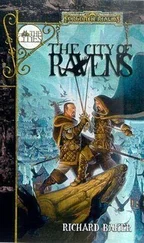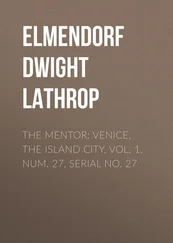All attempts to create an artificial language have been derailed by the temporality of the structure of experience. They have been unable to construct a language that is outside the island, because they cannot imagine a system of signs that could survive through time without undergoing any mutations. The statement a + b equals c is only valid for a certain amount of time, because in the irregular space of just two seconds a becomes — a and the equation changes. Evidence is only good for the length of time it takes to formulate a proposition. On the island, being fast is a category of truth. Under these conditions, the linguists of the Area-Beta of Trinity College have achieved something that should have been all but impossible: they have almost been able to root the uncertain form of reality within a logical paradigm. They have defined a system of signs whose notation changes with time. That is to say, they have invented a language that expresses what the world is like, but is unable to name it. We have been able to establish a unified field, they told Boas, now all we need is for reality to incorporate some of our hypotheses into the language.
They know that there have been seventeen cycles to date, but they believe that potentially there must be a nearly infinite number, calculated at eight hundred and three (because eight hundred and three is the number of known languages in the world). If in almost a hundred years, since the changes began to be recorded in 1939, seventeen different forms have been identified, then the most optimistic believe that the full circle could be completed in as little as twelve more years. No calculation is certain, however, because the irregular duration of the cycles is part of the structure of the language. There are slow times and fast times, just like the different stretches of the Liffey. As the saying goes, the lucky ones sail in calm waters, and the best ones live in fast times, where meaning lasts as long as a rooster’s bad mood. But the more radical youth of the Trickster group at the Area-Beta of Trinity College laugh at these silly old sayings. They think that as long as language does not find the borders that contain it, the world will be nothing more than a set of ruins, and the truth is like fish gasping for air as they die in the mud when the level of the Liffey recedes in the summer droughts, when the river becomes nothing more than a small, dark-watered rivulet.
I said earlier that tradition has it that the ancestors speak of a time in which language was an open field, where one could walk without finding any surprises. The different generations, the elders argue, used to inherit the same names for the same things, and they could leave written documents behind with the certainty that everything they wrote would be legible in times to come. Some repeat (without understanding it) a fragment of that original language that has survived through the years. Boas says that he heard the text recited as if it were a series of drunkards’ jokes, the pronunciation thick and pasty, the words broken up by laughter and other sounds that no one knew any longer if they formed part of the original meaning or not. Boas says that the fragment called Regarding the serpent went like this: “The season of the strong winds has arrived. She feels that her brain is torn out of her and that her body is made out of tubes and electrical connections. She talks nonstop and sometimes sings and says she can read my mind and asks only that I be near her and not abandon her on the sand. She says that she is Eve and that the serpent is Eve and that no one in all these centuries and centuries has dared to utter this pure truth and that the only one who said it was Mary Magdalene to Christ before she washed his feet. Eve is the serpent, the endless mutation, and Adam is alone, he has always been alone. She says that God is the woman and that Eve is the serpent. That the tree of knowledge is the tree of language. They only start talking once they eat the apple. That is what she says when she is not singing.” For many this is a religious text, a fragment from Genesis. For others it is only a prayer that has survived the permutations of language in people’s memory, and has been remembered as a game of divination. (The historians assert that it is a paragraph from the letter that Nolan left before killing himself.)
A few geneaological sects maintain that the first inhabitants of the island were exiles who were carried there by the rising river. Tradition speaks of two hundred families confined in a multiracial camp in the slums of Dalkey, north of Dublin, who were rounded up and held in the anarchist neighborhoods and suburban areas of Trieste, Tokyo, Mexico City, Petergrad.
Aboard the Rosevean, a three-mast ship, with a Pohl-A-type propeller, in the north bay, according to Tennyson, they were carried backward in time on the river, by the freezing gusts of the January winds.
The experiment of confining exiles to an island had already been utilized before as a way to confront political rebellions, but it had always been used with isolated individuals, especially to repress leaders. The best-known case is that of Nolan, a militant of a Gaelic-Celtic resistance group who infiltrated the queen’s cabinet and became Möler’s right-hand man in the propaganda planning campaign. He was uncovered because he used meteorological reports to encode messages to the Irish ghettos in Oslo and Copenhagen. History recounts that Nolan was found out by chance, when a scientist from MIT in Boston used a computer to process the messages emitted by the meteorological office in the span of a year, with the intention of studying the infinitesimal weather changes of Eastern Europe. Nolan was exiled. He reached the island after drifting randomly for nearly six days, and then lived completely alone for almost five years, until he committed suicide. His odyssey is one of the greatest legends in the history of the island. Only a stubborn, Irish son-of-a-bitch could have survived that long by himself like a rat in this vastness, singing Three quarks for Muster Mark! against the waves, screaming it out loud, on the beach, always looking in the sand for the footprint of another human being, Old-Man Berenson said. Only a man like Jim could have built a woman to talk to during those endless years of solitude.
The myth says that he built a two-way recorder with the remnants from the shipwreck, and that with this he was able to improvise conversations using Wittgenstein’s linguistic games. His own words were stored by the tapes and reelaborated as responses to specific questions. He programmed it so he could speak to a woman, and he spoke to it in all the languages he knew, and at the end it became possible to believe that the woman had even fallen in love with Nolan. (He, for his part, had loved her from the very first day, because he thought that she was the wife of his friend Italo Svevo, the most beautiful madonna of Trieste, with that gorgeous red hair that reminded you of all the rivers of the world.)
After being on the island for three years, the conversations began to repeat cyclically, and Nolan became bored. The recorder started mixing up the words (“Heremon, nolens, nolens, brood our pensies, brume in brume,” it would say, for example), and Nolan would ask “What? What did you say?” It was around that time that he began calling her Anna Livia Plurabelle. At the end of the sixth year of exile, Nolan lost all hope of being rescued. He could no longer sleep properly, and he began having hallucinations, and dreaming that he was awake all night long, listening to the sweet, wireless whispers of Anna Livia’s voice.
He had a cat, but when the cat went up the hillside one afternoon and did not return, Nolan wrote a farewell letter, set his right elbow down on the table so his hand would not shake, and shot himself in the head. The first people from the Rosevean who went onshore found the voice of the woman still talking from the bifocal recorder. She barely mixed the languages, according to Boas, and it was possible to understand perfectly the desperation that Nolan’s suicide had produced in her. She was on a rock, facing the bay, made out of wires and red tapes, lamenting Nolan’s death in a soft metallic murmur.
Читать дальше












